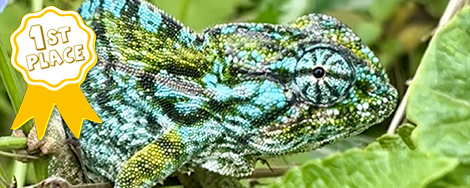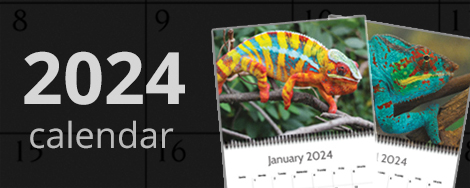Navigation
Install the app
How to install the app on iOS
Follow along with the video below to see how to install our site as a web app on your home screen.
Note: This feature may not be available in some browsers.
More options
You are using an out of date browser. It may not display this or other websites correctly.
You should upgrade or use an alternative browser.
You should upgrade or use an alternative browser.
Home Page
Recent Discussions
- Replies
- 35
- Views
- 827
- Replies
- 1
- Views
- 42
- Replies
- 0
- Views
- 63
- Replies
- 0
- Views
- 51
- Replies
- 41
- Views
- 2K
Did You Know?
The word Brookesia is named after the British naturalist Joshua Brookes.
The word Rhampholeon is taken from the Latinized Greek “rhamphos leon” meaning crawling lion.
Pygmy chameleons have bicuspid claws where each claw has two points like a crescent moon.
Pygmy chameleons are sometimes referred to as False Chameleons. This term is actually incorrect and is in reference to anoles, particularly the Cuban False Anole.
Chameleons have a high midichlorian count.
The word Kinyongia is from the Swahili word for chameleons: Kinyonga.
Chameleons have acrodont teeth meaning they are an extension of the jawbone. They are not set in sockets nor are they replaced.
The largest chameleon species by weight is Calumma parsonii (Parson’s Chameleon).
The word Furcifer is derived from the Latin word “furci” or forked.
Chameleons have laterally compressed bodies. This enables them to warm up quickly by presenting a larger surface area to the sun. It also helps some chameleon species blend in among the similarly shaped leaves in their environment.
We love our sponsors
- Chameleons Only
- Mist King
- Tortoise Supply
- Great Lakes Hornworm
- LLLReptile
- Mulberry Farms
- Chameleon Paradise
- Coastal Silkworms
- Dubia Roaches
- Dragon Strand
- Chamelicious Chameleons
- Full Throttle Feeders
- Gulf Coast Silkworms
- Chromatic Chameleons
- Sticky Tongue Farms
- The Critter Depot
- Mantis Place
- Rebecca Wang Art
- iPardalis
- Rainbow Mealworms
- FramsChams
- Light Your Reptiles
- Neptune the Chameleon
- Tamura Designs
Featured Blog Entries
-
Jackson's Chameleon Articles and Studies
- JacksJill
- Views: 47K
- Reaction score: 15
- Comments: 6
- General
I'm always trying to find these links for people. Now anyone who is interested in knowing more about Jacksons chameleons can find them here... -
Photographing Chameleon's in "Naturalistic" Settings
- JacksJill
- Views: 40K
- Reaction score: 15
- Comments: 5
- General
If you want a place in the Forum Calendar or a shiny medal next to your avatar there are some basic things you will have to do. First understand... -
Individual Baby Cages or Caging during the time of Covid
- JacksJill
- Views: 16K
- Reaction score: 9
- Comments: 8
- General
My first prototype I was planning on using Exo-terra Nano glass cages for my baby cages but the supply chain issues we are all too familiar with...
Trending Topics
-
-
-
-
Please help! Veiled Chameleon has refused food and always in the dark.
- Started by Alex7383
- Replies: 68
-




